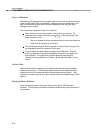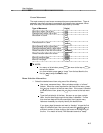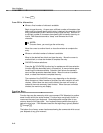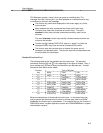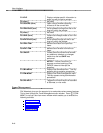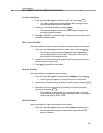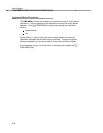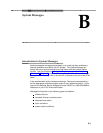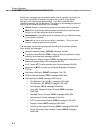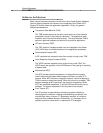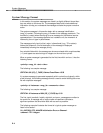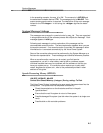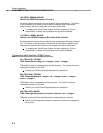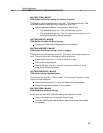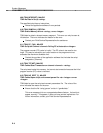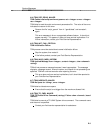
System Messages
Sometimes, messages require corrective action from an operator, but usually the
only action required by an operator is to report the condition to the System
Manager or the field service representative. If you don’t understand the
response procedure, call for assistance. The urgency of the message is specified
with one of the following definitions in the message:
Critical-the error is interrupting service, so immediate action is essential.
Major-this is a potentially serious problem and should be fixed soon even
though it is not interrupting service at this moment.
Informational-no immediate action is necessary, but you should be aware
of the system’s condition.
Status-this is not an error and no action is necessary. This is to inform
you of a change of state within the system.
The messages are divided into subgroups according to the software process
which outputs the messages:
Speech Processing Library (SPPLIB)-messages 100-299
Transaction State Machine (TSM) Process-controls transactions via script
execution and commands-messages 400-499
Voice Response Output Process (VROP)-manages speech data base and
downloads speech data to VRU-messages 500-599
Error Tracker (ET) Process-provides error history-messages 600-699
Maintenance (MTC) Process-runs temporary diagnostics-messages
700-799
Data Base Initialization (DBINIT)-messages 1700-1799
Tip/Ring Interface Process (TRIP)-messages 2000-2099
User Applications (APP)-messages 4000 and up
— FAX Attendant Library (LIB_)-messages 4000-4099
— FAX Attendant DIP (DIP15)-messages 4100-4199
— Fax Manager (DIP16)-messages 4200-4299
— Voice Mail Database Interface Process (DIP2)-messages
5000-5099
— Message Delivery Process (DIP21)-messages 5000-5099
— Administration Process-messages 5100-5149
— DCP Communication Process (DIP27)-messages 5150-5199
— Reports Process (DIP3)-messages 5200-5249
— Outcalling Data Interface Process (DIP31)-messages 5250-5299
— Switch Information Data Interface Process (DIP24)-messages
5400-5499
B-2



